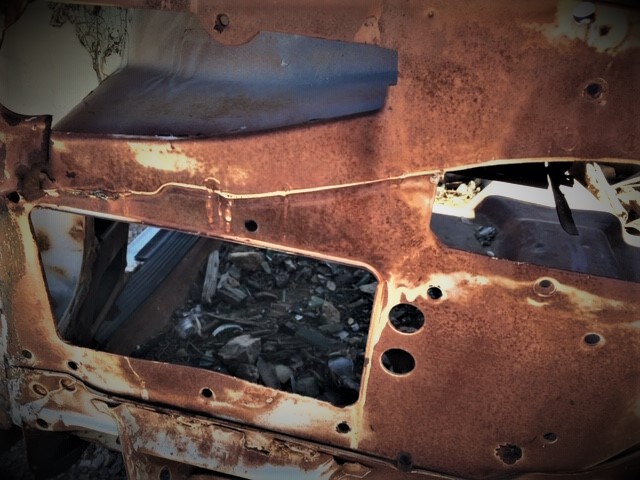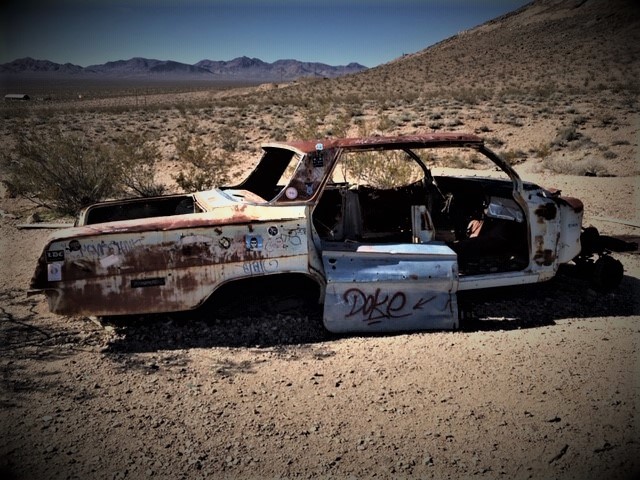Transformation
By the age of ten changes as in transformations fascinated me. One summer day I ate a peach and buried the pit in the backyard. My mother planted tomato seeds in her garden. Cellular structures transformed the pit into a peach tree, and the seeds became Beefsteak tomatoes. Where did the power to make such changes come from? Yes, I wanted to know.
In the 2nd grade our class visited the Walker Gordon Farm, a dairy farm. In the circular “barn” with tall glass windows cows stood motionless on a rotating platform. Suction cups attached to their utters drained milk into hoses connected to storage tanks. Kids asked the guide questions: what do the cows eat, do they go outside, do cows sleep standing up, how much milk goes into the bag, do those “things” (the suction cups) hurt?
Back in the classroom, Miss Beck invited a Newark News photographer to watch six of us make butter. Publicity about our field trip might impress someone. (I still have the newspaper clipping.) For the photo shoot Linda Lott wore an apron and was first to whip the heavy cream. Five of us stood around the table looking bored and, eventually, took turns churning cream into butter. I was amazed that grass became milk, and cream transformed into butter.
Fast forward to many years later. I taught in the LEARN program at Pima County Adult Probation (Tucson). My students lacked a high school diploma and many had felony charges. To change things up a bit, I planned a Let’s Make Butter lesson that included some math. Students did not know much about fractions or the lines on a butter stick wrapper. The big whoop came when Carla, a GED student, transformed the heavy cream into a thick, greasy solid.
“I never knew where butter came from,” said one student after another. Some of the guys were good at dividing marijuana and other drugs into ounces. That day they learned one stick of butter weighed four ounces and could be cut into eight tablespoons. Best of all, they watched the transformation of heavy cream into butter.
Another phenomenon occurred in my childhood kitchen. Mother often baked lemon meringue pies. I learned why the egg whites and yolks were separated. Yolks went into the cooked filling; whites became meringue. My mother used an egg beater and the whites gradually formed bubbles, hundreds of thick bubbles. When stiff mounds of shiny white fluff filled the bowl, we had meringue. I was amazed and curious. Who thought of this I asked. “Martha Washington,” was her answer. Actually, Google credits Gasparini, a Swiss pastry chef who lived around 1720.
Sunday school introduced me to another transformation. In the Russian Orthodox Church children made their first Holy Communion around the age of ten. For the event my mother sewed a lovely white, dotted Swiss dress that still hangs in my closet. I spent hours memorizing the Before and After Communion prayers. On Saturday, the day before the all-important Sunday, I made my First Holy Confession. When I think about innocuous childhood sins like hitting my sister or talking back to my father, I roll my eyes and smirk. What are childhood sins, anyway? Was defending myself a sin? I had to say something to the priest. Playing with matches might be considered a sin. I did not have much to confess.
Holy Communion centers on accepting the body and blood of Christ. I had no idea as to it’s significance and still don’t. As usual, that Sunday parents and parishioners filled the church pews. The choir sang their repertoire of liturgical hymns and incense scented the air. The stained glass windows glistened from sunlight. I stood patiently in the Communion line and waited my turn.
When I reached the front, Father Stroyan bent slightly to spoon a little red wine into my little bird mouth. The wine had something to do with the blood of Christ. Beside the priest stood an altar boy who held a tray of Holy Bread. Those small pieces represented the body of Christ. After I swallowed the wine, I took a piece, put that into my mouth and returned to my seat. Now the blood and body of Christ were inside of me. The day was one of celebration, a rite of passage that continues in the Orthodox church.
Transformation occurs in science, religion, and life—all life. In the 1800s, a French philosopher with a long last name noted that the more things change, the more they stay the same. From my viewpoint, I do see things change. Most often they do not remain the same.
- * * *




















